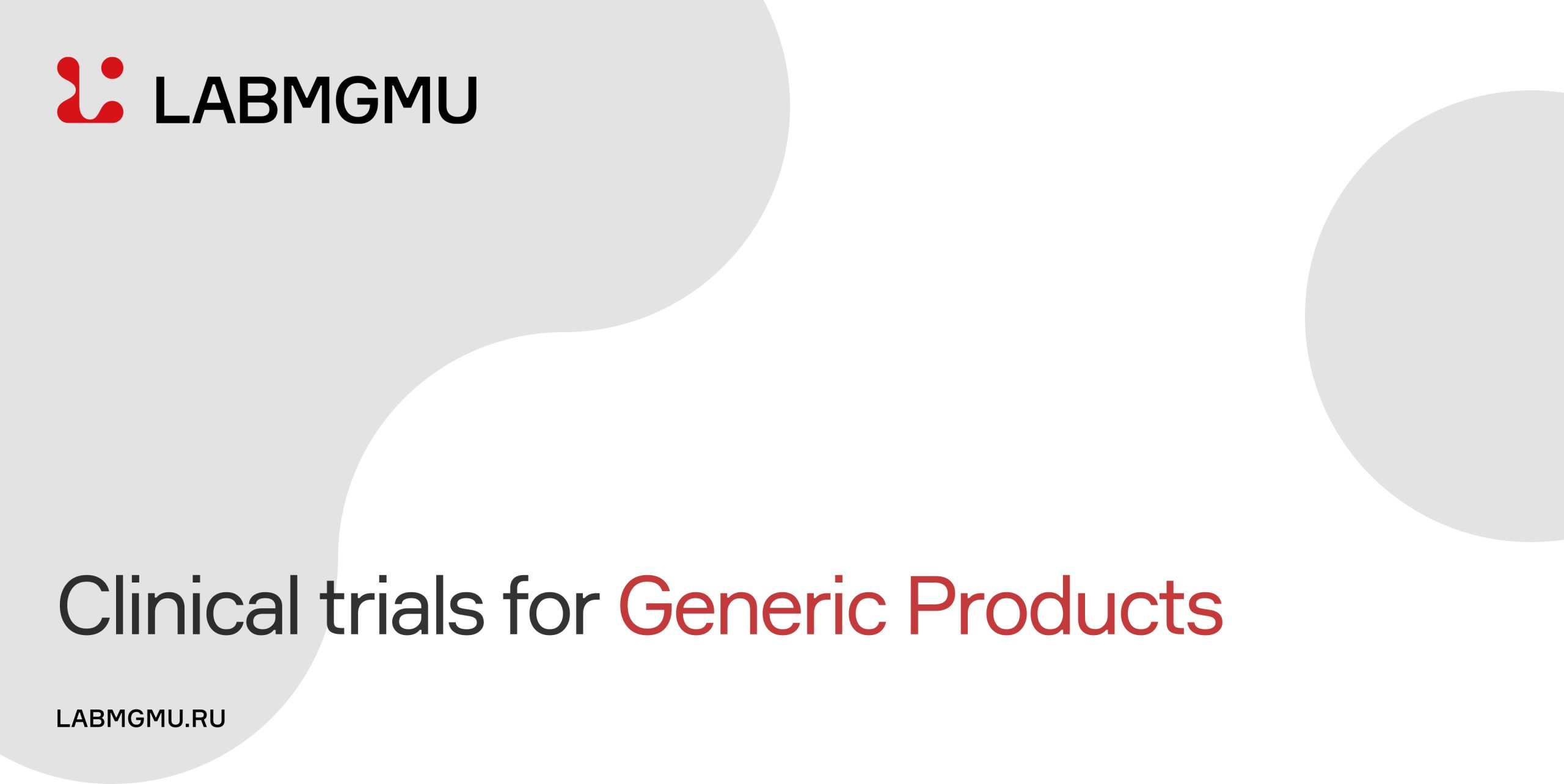
This publication includes answers to the following questions:
On November 3, 2016 Rules for bioequivalence studies of medicinal products within the framework of the Eurasia Economic Union were approved by the Decision of the Council of the Eurasian Economic Commission No 85 (hereinafter referred to as the Rules).
A Generic Drug is defined by article 11 of the Rules as follows:
Bioequivalence studies prove the equivalence of the generic drug to reference product in its quality to extrapolate results of preclinical and clinical trials of the reference product to the generic product.
According to Article 2 of the Rules, two drugs with the equivalent amounts of the active ingredient, are considered bioequivalent if
The studies of bioequivalence may be conducted (Article 11 of the Rules):
According to Article 4 of the Rules, its scope covers medicinal drugs in the form of solid immediate release dosage forms for parenteral use. Bioequivalence studies of other dosage forms are described in Appendix 1 to the Rules.
No in vivo bioavailability studies within the biowaiver procedure is required in the following cases:
Determination of equivalence through Pharmacokinetic Studies
The concentration-time curve is usually used for determination of the rate and extent of absorption in the bioequivalence studies (Article 3 of the Rules).
The pharmacokinetic parameters shown below and the predefined acceptable limits provide a means for bioequivalence assessment of the drugs being compared by comparative bioavailability assessment:
Moreover, Сmax and tmax are parameters affecting the rate of absorption of the active substance from the dosage form.
Development of design and conducting studies, comparative bioavailability study analysis to support bioequivalence are conducted according to the requirements of section III of the Rules.
If bioequivalence cannot be supported with bioavailability studies, pharmacodynamic or clinical studies are to be conducted according to the requirements specified in Appendices 2 and 3. (Article 4 of the Rules)
Determination of equivalence through Pharmacodynamic Studies
See Appendix 2 to the Rules for the requirements to pharmacodynamic studies within the framework of the bioequivalence studies.
Pharmacodynamic studies in healthy volunteers or patients may be used for establishing the equivalence between the two medicinal drugs if the pharmacokinetic approach is not applicable.
A pharmacodynamic equivalence study may be required unless an assay of the active substance and(or) its metabolites plasma or urea levels can be performed with sufficient sensitivity and precision.
Besides pharmacodynamic equivalence studies in humans are required if the active substance level cannot be used as surrogate end points to support the efficacy and safety of the specific product, e.g. for a topical medicinal product.
BUT at certain circumstances (e.g. for liposomal drugs) the plasma concentration-time curves are not applicable for the medicinal drug equivalence assessment.
Although pharmacodynamic studies can be suitable for establishing the equivalence, sometimes, the specified studies cannot be used because of lacking pharmacodynamic parameters to be reliably measured. In that case, clinical studies may be required to support the equivalence of two medicinal drugs (Article 1, Appendix 3 to the Rules)
Determination of equivalence through Clinical Trials
(Appendix 3 to the Rules)
Comparative clinical trials, described in these Requirements, are conducted according to 2 basic designs:
and
If the clinical study is conducted to support the clinical equivalence, the same statistical principles should be used as for the bioequivalence study. Moreover, 95% confidence intervals should be used for the pharmacodynamic and clinical endpoints instead of the 90% confidence intervals commonly used for the pharmacokinetic trials. The number of patients included into the clinical trial will depend on the variability of the measurable parameters and the acceptable variation range, usually significantly exceeding the bioequivalence study requirements.
The following statements must be clearly defined in the equivalence study protocol:
A placebo product should be used in design of such studies (whenever appropriate).
In certain cases, safety endpoints should be included into the final comparative analysis.
The generic and reference products must comply to the requirements of Subsection 2, section III of the Rules for the comparative clinical study of bioequivalence.
Determination of Bioequivalence by Biowaiver Based on the Biopharmaceutics Classification System
(Appendix No 4 to the Rules)
The Biopharmaceutics Classification system (BCS) is a scientific approach enabling to classify the active substances of the medicinal products based on their water solubility and intestinal permeability properties. Biowaiver based on the Biopharmaceutics Classification System (BCS) is designed to decrease the number of in vivo bioequivalence studies.
Together with the dissolution kinetics test for the medicinal product, BCS considers 3 basic factors affecting the rate and extent of absorption of the active substances from the immediate release oral dosage forms:
A BCS-based biowaiver is limited on the solid systemic dosage forms for immediate release, containing highly soluble active substances with predictable absorption in humans, on condition that these substances are characterized by a wide therapeutic range.
Such approach is not applicable to sublingual, buccal dosage forms and modified release products, as well as for orally dispersible dosage forms, if unless oral absorption is not excluded.
Biowaiver as a replacement for the in vivo bioequivalence studies is possible if the active substances of the test and reference drugs are similar and belong to BCS class I or III (if requirements of section II, Appendix No 4 are met).
Biowaiver is also possible if the study and reference drugs contain various salts on condition of belonging to BCS class I (high solubility and full absorption). The active substance should not be of a narrow therapeutic range according to requirements of subsection 11, section III of the Rules.
Biowaiver is not possible, if the study medicinal product contains compound ethers, stereoisomers or their combinations, mixtures or derivatives of the reference product active substance, as such differences may lead to variable bioavailability which cannot be detected through the tests used for the BCS-based biowaiver concept.
December 26, 2022